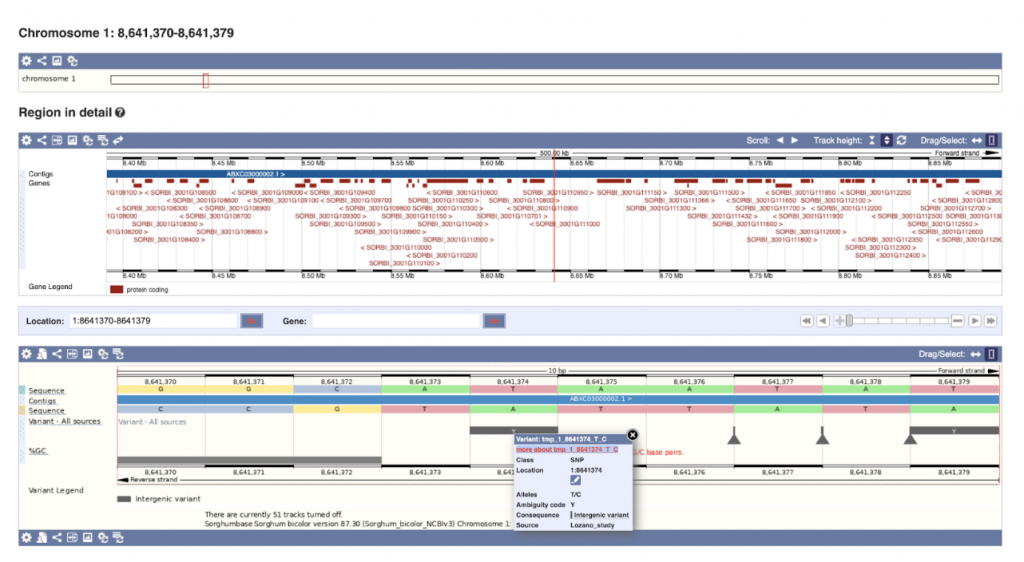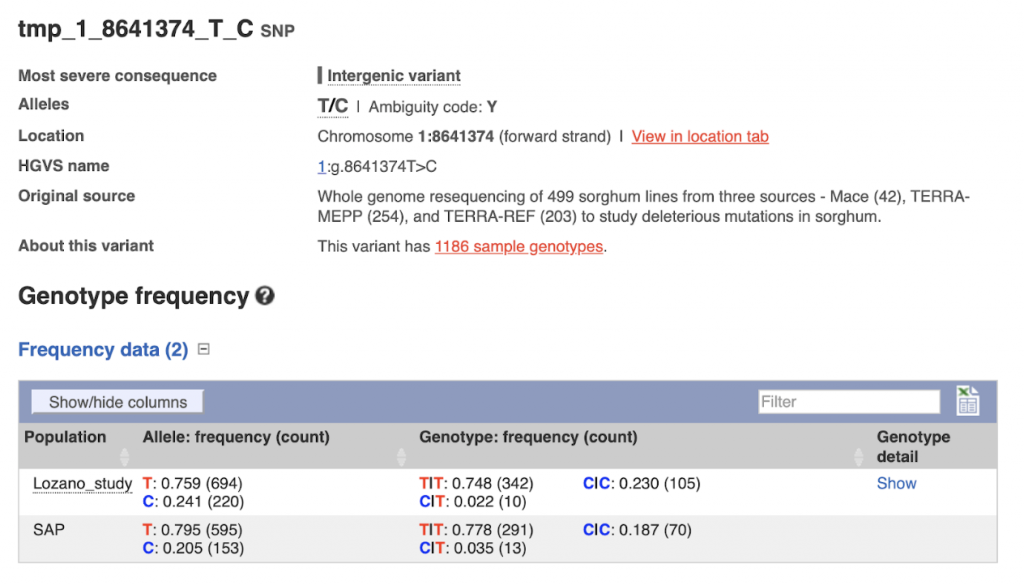Genomic and Phenomic Techniques in Pre-Breeding For Improved Chilling Tolerance in Sorghum
Crops with tropical origins can benefit from early planting, which provides them with a 20% longer growing season, as well as decreasing water loss, suppressing weeds and eliminating drought-stress post-flowering, increasing grain yield by 7-11%. In sorghum however, chilling sensitivity restricts how early planting can occur and breeding for chilling tolerance (CT) has been limited by the fact that CT genes are co-inherited with undesirable alleles like tannin and dwarfing. Marla and colleagues, from Kansas State University, USDA-ARS, University of Florida, King Abdullah University of Science and Technology and Colorado State University, suggest that genome-to-phenome (G2P) approaches have potential in complex trait breeding if issues with low-resolution mapping, poor scalability, and complex phenotyping are addressed. The researchers used G2P techniques to establish strong trait-to-QTL and QTL-to-marker association to improve sorghum early-season chilling tolerance. Uncrewed aircraft systems (UAS) high-throughput phenotyping platforms were used to scale up efforts and the performance of this technique was correlated with manual phenotyping. Fixation index (FST) analysis was employed to identify rare SNPs specific to CT, and markers were generated to track donor CT alleles in two breeding programs. Normalized difference vegetation index (NDVI) values, extracted from the images obtained using the UAS mapped CT QTL, colocalized with those found manually from best linear unbiased predictions (BLUPs) for seedling vigor. The researchers concluded that UAS phenotyping shows great promise in pre-breeding for complex traits.
SorghumBase Examples:




Reference:
Marla S, Felderhoff T, Hayes C, Perumal R, Wang X, Poland J, Morris GP. Genomics and Phenomics Enabled Prebreeding Improved Early-Season Chilling Tolerance in Sorghum. G3 (Bethesda). 2023 May 26:jkad116. PMID: 37232400. DOI: 10.1093/g3journal/jkad116. Read more
Related Project Websites:
Morris Lab at Colorado State University: https://www.morrislab.org/

